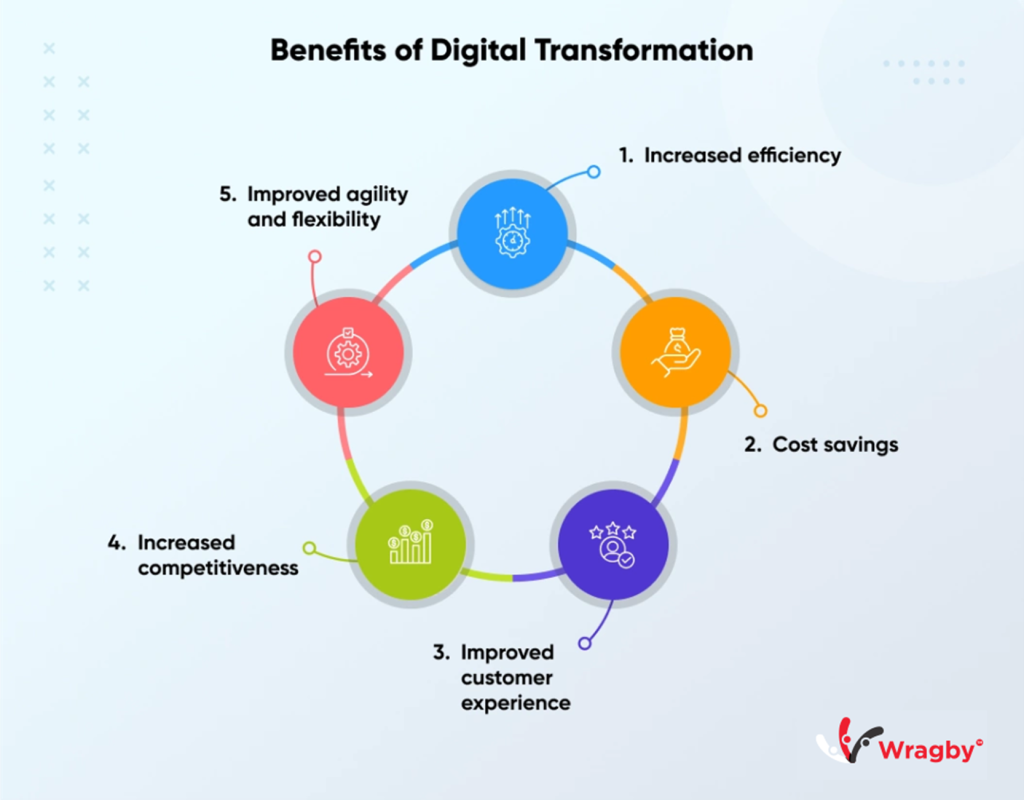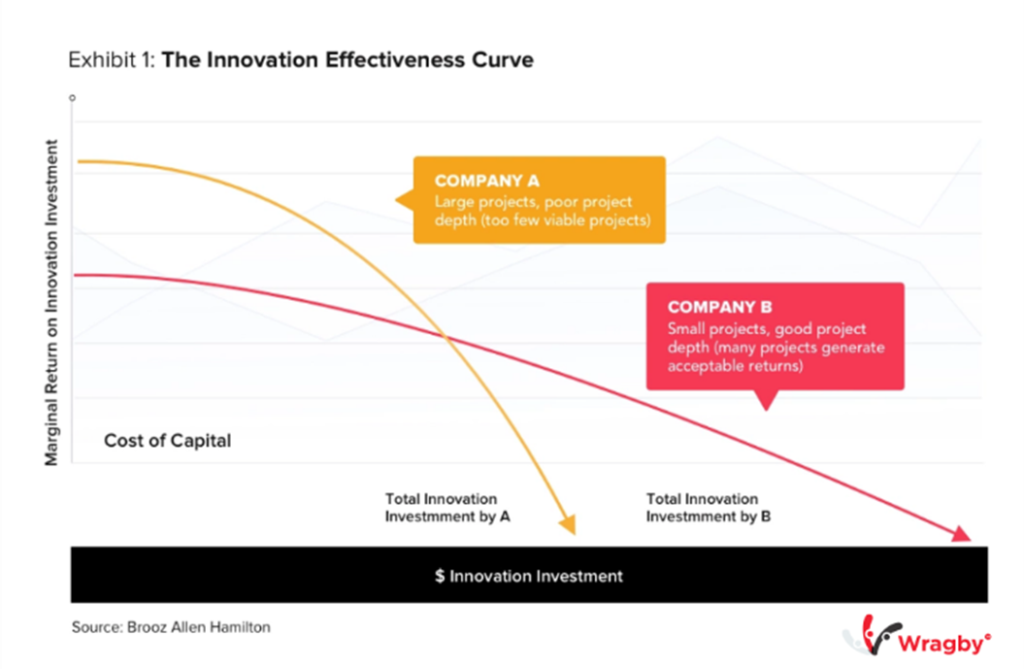
How to Measure the ROI of Digital Transformation. A Step-by-Step Guide
Digital transformation remains a top priority for businesses today with the evident advantages of digital technologies. Its capacity to enhance efficiency and modernize operations enables businesses to streamline their processes, enhance the customer experience, and gain a competitive edge in the marketplace.
However, measuring the efficiency (ROI) of your digital transformation efforts is a critical question for any firm seeking to digitally transform their business. In this blog, we will simplify the meaning of ROI, its significance, and how you can use it to gauge the success of your digital transformation plan.
What is ROI, and why is it important?
Imagine this: you own an HR firm, and most of your processes and documentation are still reliant on pen, paper, and hard copy files. Then, you decide to transition to using HR software to automate your operations. After conducting some research on the software, you realize it costs 1 million Naira annually but is expected to increase productivity by more than 50%, resulting in a total revenue of over 2 million Naira. To calculate the ROI of this investment, you would divide the gain from the investment (₦2,000,000) by the cost of the investment (₦1,000,000) and then multiply by 100 to express the result as a percentage. This calculation would give you an ROI of 200%.
Table of Content
What is ROI, and why is it important?
Benefits of Digital Transformation
Digital Transformation Metrics
Steps for calculating the ROI of digital transformation.
Key Factors that Affect ROI for Digital Transformation
Tips for maximizing the ROI of digital transformation.
Maximize Your Digital Transformation ROI With Wragby Business Solutions
So, what is Return on Investment or Return on Digital Investment?
Return on Investment (ROI) is a financial measure that evaluates the efficiency of an investment or project. It is a ratio between net income and investment. A high ROI means the investment’s gains compare favorably to its cost.
Digital transformation is the process of adoption and implementation of digital technology by an organization to create new or modify existing products, services and operations by the means of translating business processes into a digital format.
Benefits of Digital Transformation

Increased Efficiency: Digital transformation optimizes processes and streamlines workflows by replacing manual, time-consuming tasks with automated and efficient solutions. This efficiency improvement enables organizations to complete tasks faster, allocate resources more effectively, and enhance overall productivity.
Cost Savings: Digital transformation often results in cost savings through reduced manual labor, decreased paper and administrative costs, and improved resource allocation. Additionally, technology upgrades may lead to more efficient resource usage and less wastage, ultimately contributing to a more cost-effective operation.
Improved Customer Experience: Digital transformation allows businesses to offer more personalized and responsive customer experiences. Through data analytics and digital tools, organizations can better understand customer preferences, tailor their offerings, and provide seamless, real-time interactions, leading to increased customer satisfaction and loyalty.
Increased Competitiveness: Staying competitive in today’s business landscape often requires leveraging digital technologies. Digital transformation enables companies to adapt to market changes swiftly, innovate, and outperform rivals. By adopting the latest technologies, businesses can better meet customer expectations and stay ahead in their respective industries.
Improved Agility and Flexibility: Digital transformation equips organizations with the ability to pivot and adapt to changing circumstances rapidly. With cloud-based systems, remote work capabilities, and flexible IT infrastructure, businesses can respond to market shifts and unexpected events with greater agility, ensuring continuity and resilience.
Digital Transformation Metrics

Based on past practices and data, identifying ROI can be difficult for transformation leaders, “69% of leaders who participated in a survey believe that measuring the return on digital transformation is difficult because customer interactions cannot be quantified using traditional means.”, but regardless of this “The global digital transformation market is expected to grow to $1,009.8 billion by 2025 from $469.8 billion in 2020, at a CAGR of 16.5% during this period.”
What this means is that more are more companies are looking to adopt digital technologies.
Steps for calculating the ROI of digital transformation.
Step 1: Identify the Objectives of Your Digital Transformation Project:
This initial step involves clearly defining the goals and outcomes you aim to achieve through your digital transformation initiative. Establishing these objectives is fundamental as they will serve as the basis for measuring the success of the project and determining its return on investment.
Step 2: Determine the Costs of the Project, Including Hardware, Software, and Labor Costs:
In this phase, you comprehensively assess the financial aspect of your digital transformation project. This includes identifying and quantifying all the expenses associated with the initiative, such as the costs of hardware, software licenses, and the labor required for implementation and ongoing management.
Step 3: Identify the Project’s Benefits, Including Increased Revenue, Cost Savings, and Improved Efficiency:
This step focuses on evaluating the positive outcomes generated by your digital transformation efforts. It involves measuring the benefits, which can encompass areas like increased revenue, cost reductions, and enhanced operational efficiency. By quantifying these advantages, you gain a holistic view of the return on your investment.
Key Factors that Affect ROI for Digital Transformation
1. Exploring the Needs of Customers:
Understanding and aligning digital transformation with the evolving needs and preferences of your customers is crucial. By prioritizing customer-centric solutions, businesses can enhance their products or services and drive higher customer satisfaction, ultimately leading to increased ROI.
2. Digital Innovation Investment:
Investing in cutting-edge digital technologies and innovative solutions is key to achieving a significant return on investment. This includes adopting emerging technologies, automating processes, and fostering a culture of innovation, all of which can lead to improved operational efficiency and revenue growth.
3. Data-Informed Decisions:
Leveraging data analytics and insights is vital for informed decision-making. By using data to guide strategic choices and optimize processes, organizations can enhance efficiency and effectiveness, leading to a positive impact on ROI.
4. Track Performance:
Continuous performance monitoring and evaluation are essential for maximizing ROI. Regularly assessing the effectiveness of your digital transformation initiatives allows you to make necessary adjustments and improvements, ensuring that your efforts are on the path to delivering the desired return on investment.
Tips for maximizing the ROI of digital transformation.
Define Clear Objectives: Start with a well-defined strategy and clear goals for your digital transformation to ensure that investments align with your business objectives.
Data-Driven Decision-Making: Leverage data analytics to make informed decisions, optimize processes, and identify opportunities for improvement.
Agile Approach: Embrace agility and adaptability to respond to changing market conditions and technologies, allowing you to stay competitive.
Employee Training: Invest in training and upskilling your workforce to ensure they can effectively use new digital tools and technologies.
Customer-Centric Focus: Prioritize customer experience improvements to enhance satisfaction and loyalty, ultimately boosting ROI.
Cybersecurity and Compliance: Allocate resources to protect your digital assets, ensuring data security and compliance with regulations to avoid costly breaches or penalties.
Maximize Your Digital Transformation ROI With Wragby Business Solutions
Digital transformation can be a complex endeavor, but you don’t have to tackle it alone. At Wragby, we’re here to provide you with the necessary resources and expertise to seamlessly integrate digital technologies, revolutionize your service delivery, reach new customer segments, and maintain a competitive edge.
Our team is well-equipped to guide you through the often-intricate journey of digital transformation. Reach out to us, and let’s discuss how we can craft a tailor-made solution that ensures a strong return on investment for your digital initiatives.
With a proven track record of successfully executing digital transformation projects across various industries, we understand that there’s no one-size-fits-all approach. We take the time to customize our services to suit your unique requirements, guaranteeing exceptional results.
Wragby is a proven industry leader with expertise in Cloud Infrastructure, Artificial Intelligence, Data, Software Engineering, Product Development, Modern Workplace, Business Applications, Digital Advisory and Managed Services in West Africa. Our company is a tier-one technology solutions provider with unique competencies, advanced specializations, Awards, and various industry-tailored Products. These affirm our dedication to transforming businesses via innovation and making the world a better place through technology. Talk to us.
FAQs:
1. What are the KPIs for Digital Transformation?
Key Performance Indicators (KPIs) provide a systematic approach to assess the success of digital transformation efforts. These metrics typically revolve around areas like customer experience, cost management, and operational efficiency.
2. What are the 3 Key Elements of Digital Transformation?
A successful digital transformation strategy comprises technology, people, and processes as its three core elements. These elements work in harmony to drive the transformation’s objectives.
3. What are the 4 Main Areas of Digital Transformation?
Digital transformation can have a substantial impact in various domains, including customer experience enhancement, operational process optimization, innovative business models, and efficient data management.
4. What are the 3 Layers of Digital Strategy?
Digital strategy involves three critical layers: the foundational layer, which builds the technology infrastructure; the strategic layer, which aligns technology with business goals; and the execution layer, where digital initiatives are implemented and monitored.



Leave a Reply